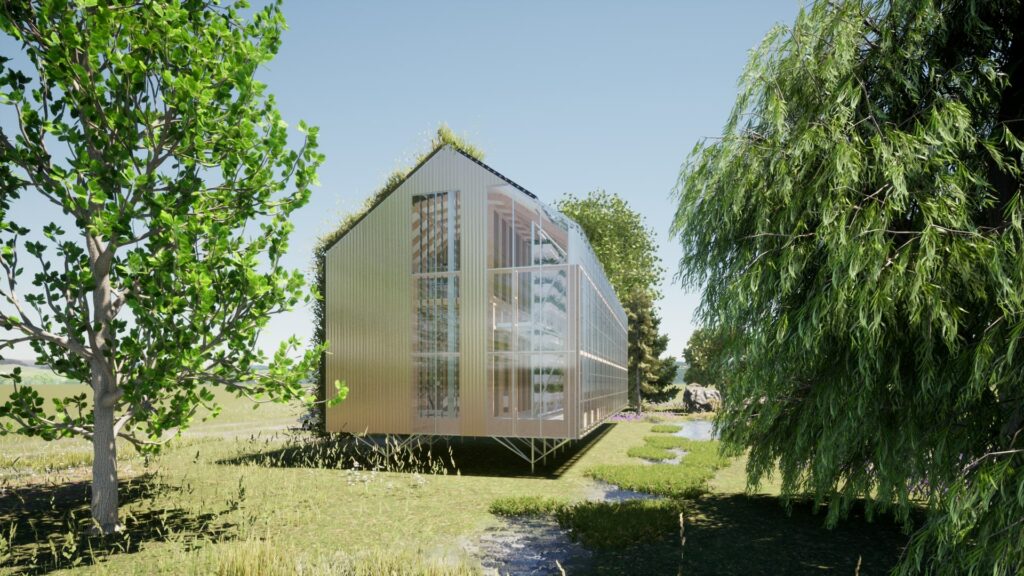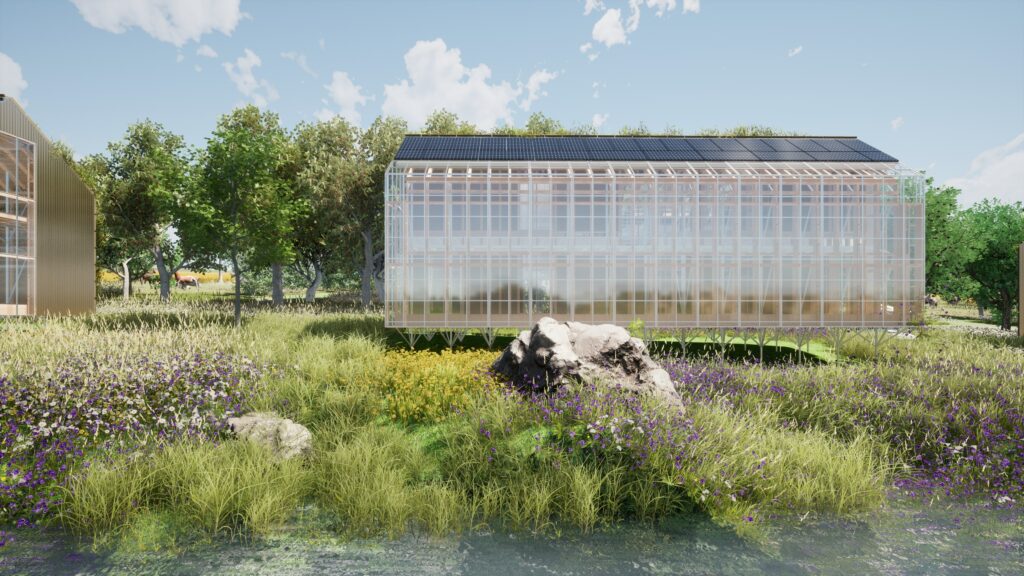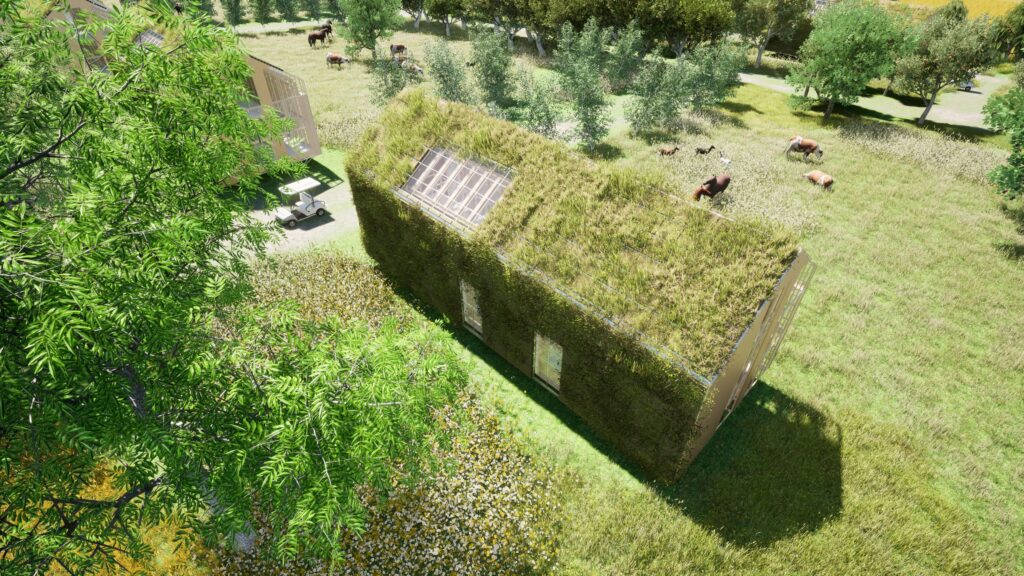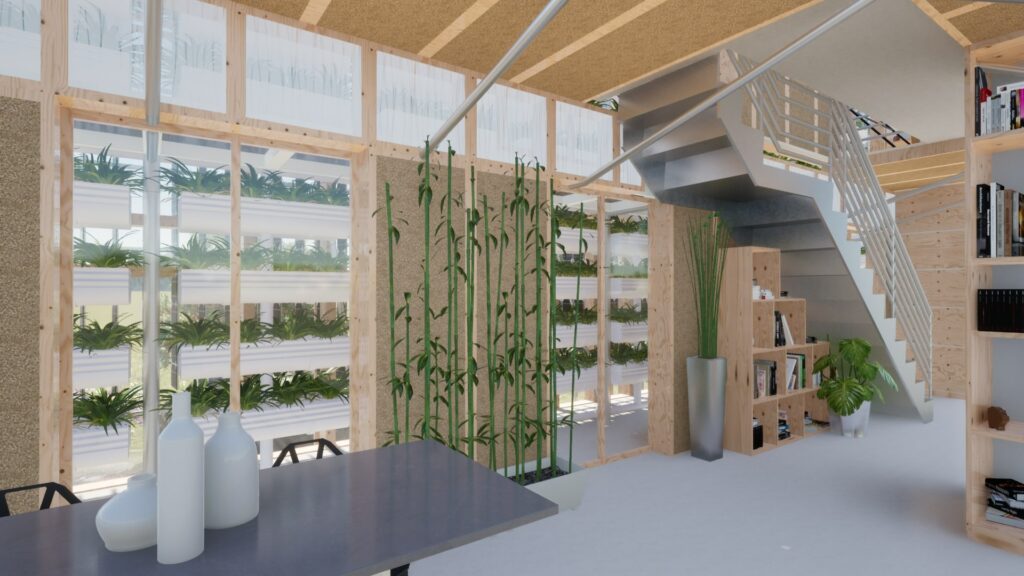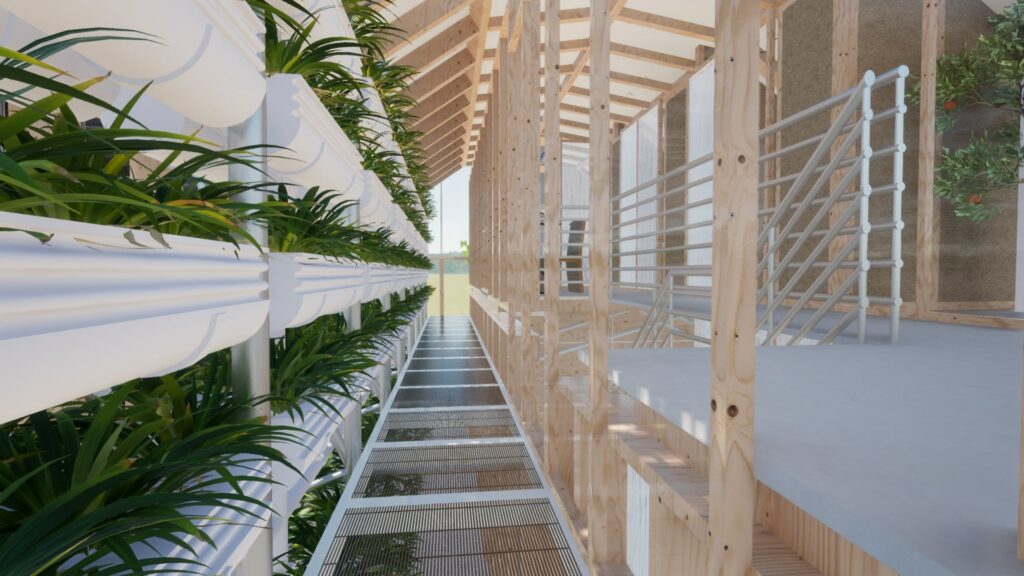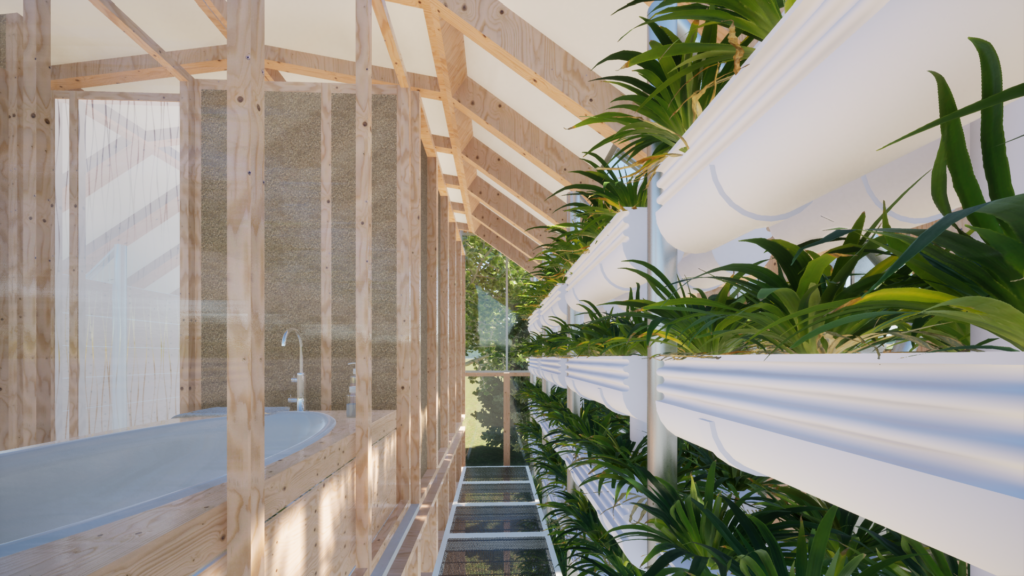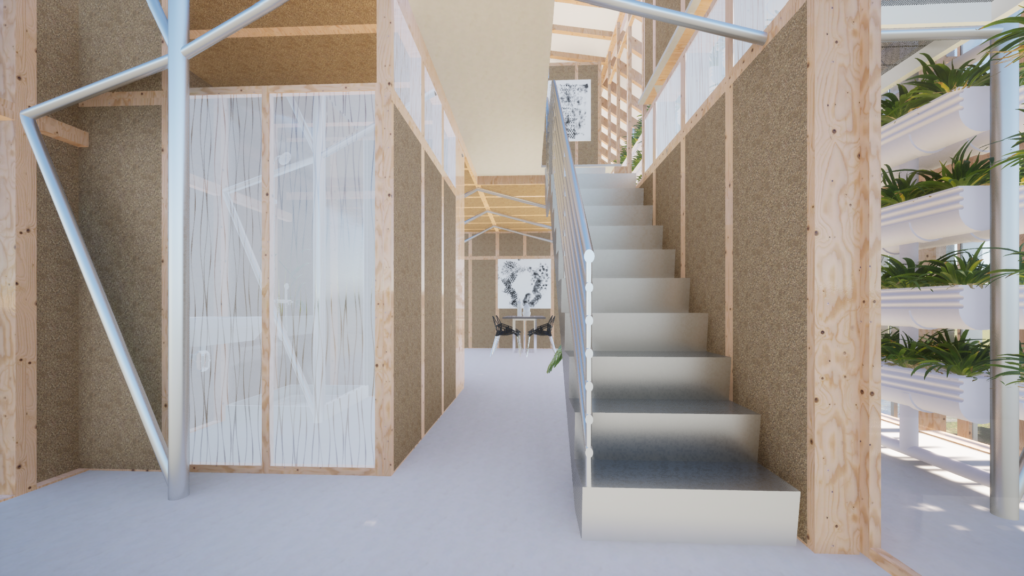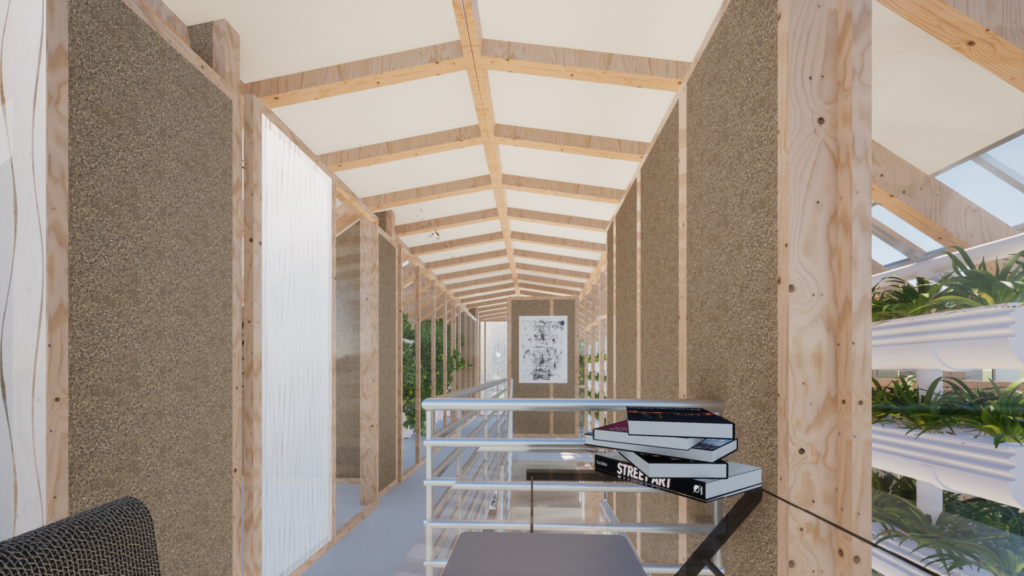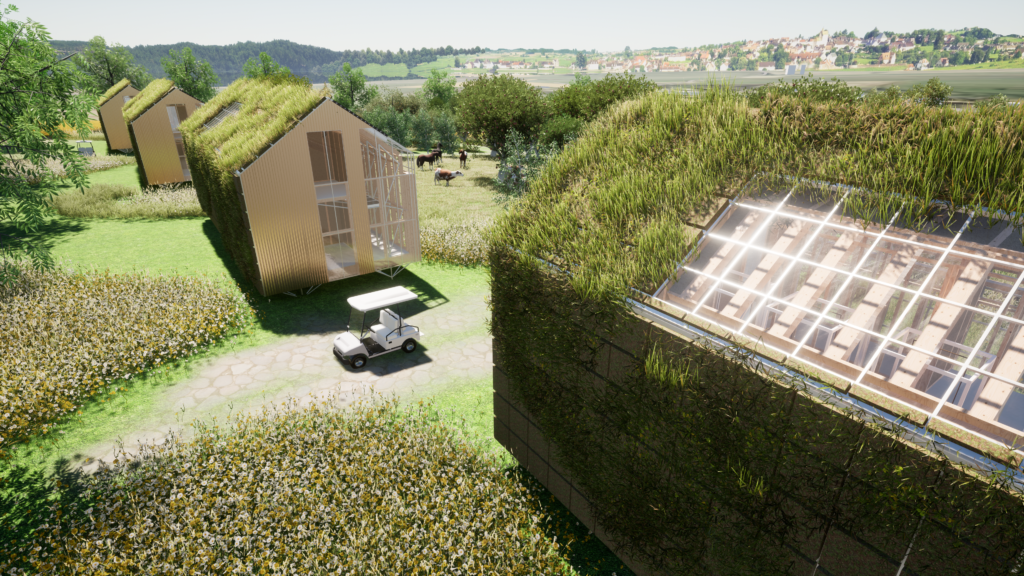
The H4F-House4Future concept combines ecological buildings with new principles from the field of water management and organic farming into a complex that can cooperate with the ecosystem of the surroundings. An essential element is the facade wetland system. The construction is demountable and does not require lifting mechanization. It structurally connects bio-based building materials with the foundation system on steel elements. It uses geothermal energy, solar energy and biogas. The wetlend root cleaning system is connected to a gray water circuit. An important component is the greenhouse part enabling the cultivation of crops in an indoor hydroponic growing system. A house of this type tends to be more self-sufficient, and significantly reduces the carbon footprint. Biowaste production is processes on adjacent agricultural areas. The water retention system supporting biodiversity, follows it according to specific regional conditions. If the objects designed in this way and their follow-up measures are connected into a suitable structure, they can help to combat climate change, as well as contribute to the improvement of soil quality, and thus reduce the costs of further support measures.
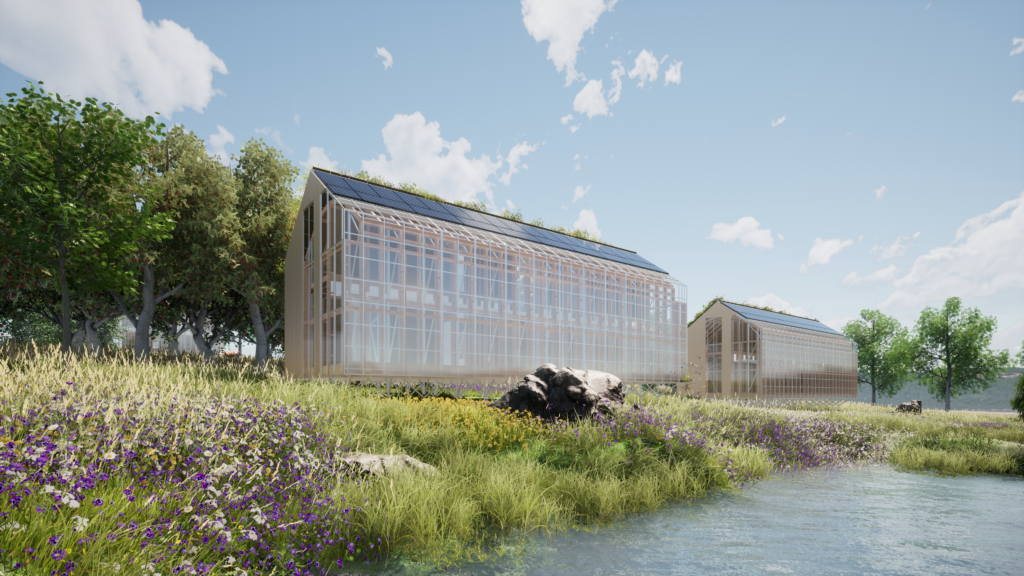
Koncepce domů H4F-House4Future, propojuje ekologické stavby s novými principy z oboru vodohospodářství a ekologického pěstitelství do celku, který dokáže spolupracovat s ekosystémem okolí. Podstatným prvkem je fasádní mokřadní systém. Stavba je demontovatelná a nevyžaduje zdvižnou mechanizaci. Konstrukčně propojuje stavební materiály na bio¬bázi se základový systém na ocelových prvcích. Využívá geotermální energii, solární energii a bioplyn.
Kořenová čistička je napojena na okruh šedé vody. Důležitým komponentem je skleníková část umožňující pěstování plodin v interiérovém hydroponickém pěstebním systému. Dům tohoto typu směřuje k vyšší soběstačnosti, a podstatně snižuje uhlíkovou stopu. Produkce bioodpadu se
zpracovává na přilehlých zemědělských plochách. Systém zadržování vody podporující biodiversitu na něj navazuje dle konkrétních regionálních podmínek. Pokud se takto koncipované objekty a jejich návazná opatření propojí do vhodné struktury, mohou pomáhat s bojem proti změně kli¬matu, i přispět ke zlepšení bonity půdy, a tím snížit náklady na další podpůrná opatření.
The aim of the project is to find synergies in the field of research on adaptation measures in construction and their subsequent application in construction practice. The result is a long-term sustainable system that improves landscape biodiversity, ecosystem integrity and has economic benefits. The concept of working with a residential structure as a win-win strategy that respects the meaning and significance of the words home, ecosystem and biodiversity.
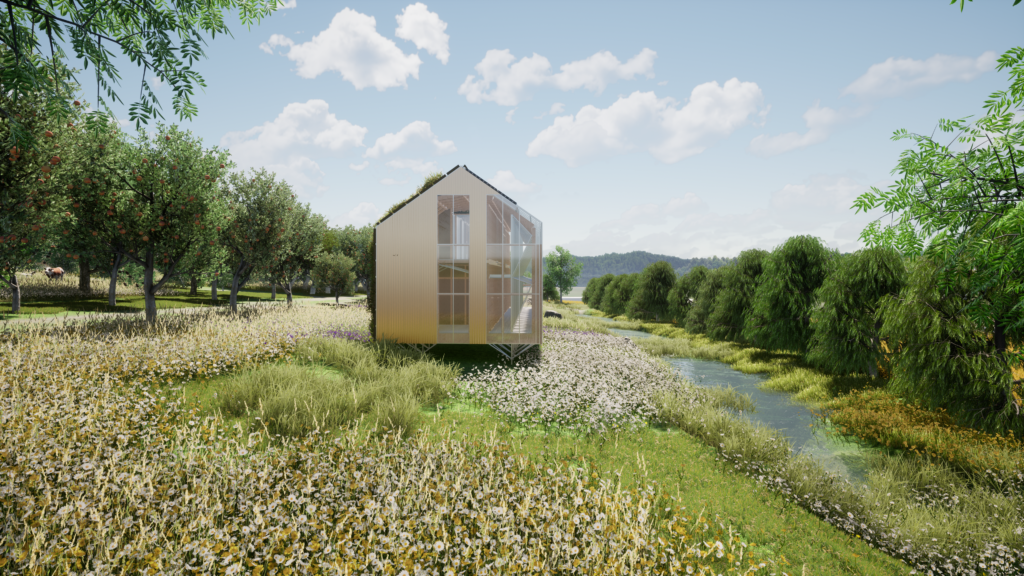
Cílem projektu je nalezení synergie v oblasti výzkumu adaptačních opatření ve stavebnictví a jejich následná aplikace do stavební praxe. Výsledkem je dlouhodobě udržitelný systém, který zlepšuje biodiversitu krajiny, celistvost ekosystému a má ekonomický přínos. Koncepce práce s obytnou strukturou jako win-win strategie, která respektuje smysl a význam slov domov, ekosystém a biodiversita.
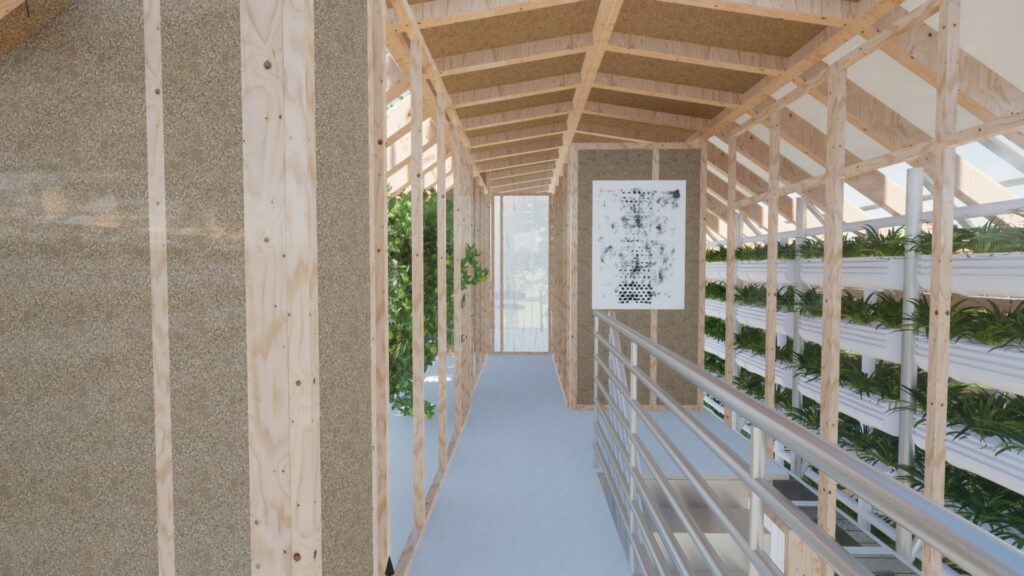
Climate change and the associated threat of drought is a global problem. Soil erosion occurs on large agricultural areas, and drought worsens its quality. These plots are outside the infrastructure and settlement plans. The disproportion of land prices in urban areas and beyond creates pressure to create integral settlement radials around cities, instead of more decentralized areas for the landscape, which would enable the preservation of the ecosystem. Water comes to the place where man comes. Wetland systems based on root treatment plants can now become part of the construction and connect to the surrounding water management system. These procedures lack greater awareness among the population and related methodologies. Respect for the landscape is important, for nature as a whole, a small part of which is man.
Mezi hlavní trendy, které mění současné pěstitelské postupy je pěstování plodin v inetriéru hydroponickými pěstebními systémy. Tyto se při včasné integraci do návrhu domu mohou stát plnohodnotnou součástí domácnosti. Díky tomu zabezpečují jak stabilní přísun potravin, tak vyvážené vnitřní prostředí. Mezi hlavní výhody systému patří snížení vegetační doby plodin, snížení spotřeby vody až o 90%, pěstování bez použití pesticidů, celoroční výnosy, kompletní skladba potřebných živin pro rostliny. Díky úzkému propojení s domem dokáže systém využívat odpadního tepla.


